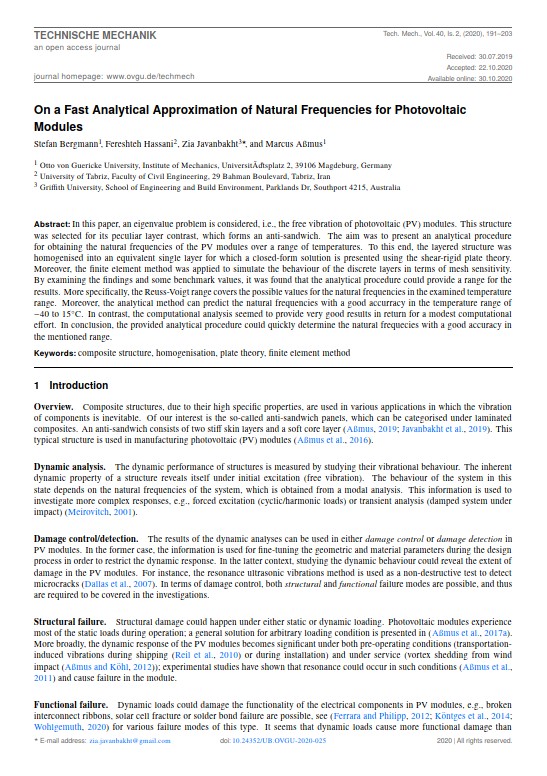On a Fast Analytical Approximation of Natural Frequencies for Photovoltaic Modules
DOI:
https://doi.org/10.24352/UB.OVGU-2020-025Keywords:
composite structure, homogenisation, plate theory, finite element methodAbstract
In this paper, an eigenvalue problem is considered, i.e., the free vibration of photovoltaic (PV) modules. This structure was selected for its peculiar layer contrast, which forms an anti-sandwich. The aim was to present an analytical procedure for obtaining the natural frequencies of the PV modules over a range of temperatures. To this end, the layered structure was homogenised into an equivalent single layer for which a closed-form solution is presented using the shear-rigid plate theory. Moreover, the finite element method was applied to simulate the behaviour of the discrete layers in terms of mesh sensitivity. By examining the findings and some benchmark values, it was found that the analytical procedure could provide a range for the results. More specifically, the Reuss-Voigt range covers the possible values for the natural frequencies in the examined temperature range. Moreover, the analytical method can predict the natural frequencies with a good accurracy in the temperature range of -40 to 15 C. In contrast, the computational analysis seemed to provide very good results in return for a modest computational effort. In conclusion, the provided analytical procedure could quickly determine the natural frequecies with a good accuracy in the mentioned range.





